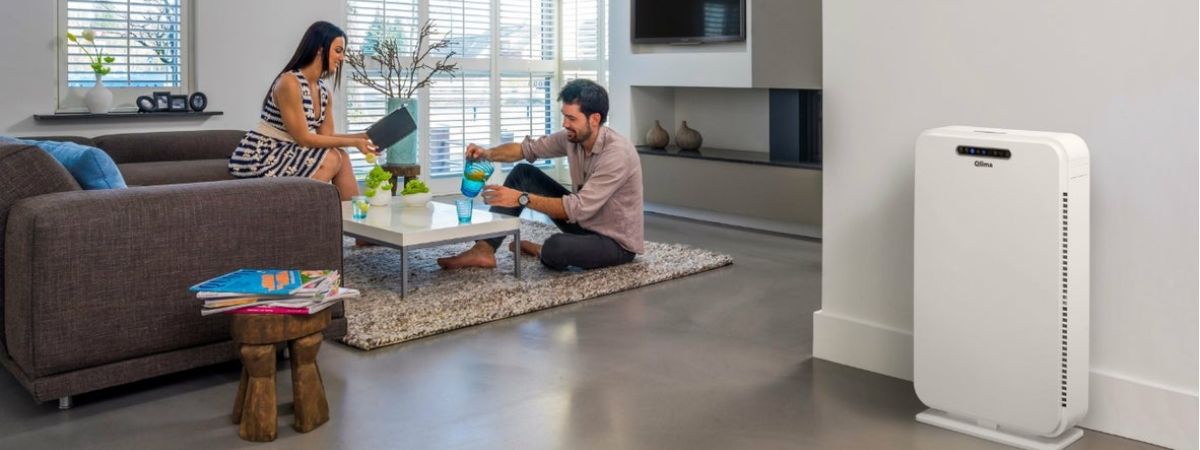
Breathing well at home is not easy! If you are allergic or asthmatic, you undoubtedly experience a real embarrassment during the peaks of pollution or pollen. This is where an air purifier can make all the difference. But only if you use it properly. Discover all our tips for maintaining your car, using your purifiers well and breathing better at home thanks to your air purifier.
Use Your Purifiers During Pollen Peaks

Do you have a stuck nose and difficulty breathing as soon as pollens fly in the air in spring or summer? You are not alone. By 2050, 1 in 2 people will have a respiratory allergy, often diagnosed as asthma (World Health Organization forecasts).
To protect you inside the house, the air purifier is very effective. Biological pollutants like pollens and molds are fairly large particles (around 40 microns) that are easily caught in the filter of your purifier.
Operate it regularly as soon as you feel the first sneezes, signs of a massive influx of pollens. And as a bonus, animal hair is also collected by the prefilter of your air purifier. If you suffer from this allergy, here is another settled matter.

Operation of the device: The prefilter is effective on large particles (hair, hair, dust). The activated carbon filter captures odors, fumes, and certain gases and VOCs. The HEPA filter is effective in retaining 99% of fine particles. The turbine brings the polluted air into the filters and the air comes out purified from the device.
Using Your Purifier During Pollution Peaks

Indoor air is always more polluted than outdoor air. It concentrates all outdoor pollutants and our lifestyles add a good amount of indoor pollutants like formaldehyde and the whole family of VOCs (Volatile Organic Compounds), including the famous fine particles. These are at the origin of the triggering of pollution alerts. The good news is that your air purifier is effective against the vast majority of these pollutants. Indeed, the HEPA (High-Efficiency Particulate Air) filter, present on most air purifiers, retains 99% of fine particles (less than 2.5 microns)!
Our advice: operate your purifiers during outdoor pollution peaks (those advertised in the media) but also during indoor pollution peaks (when you repaint a room, buy new furniture, use interior scent or aggressive cleaning products). And to find out if your indoor air is polluted, answer our test below.
Using Your Purifier During Winter Illnesses

The HEPA filter is so efficient that it retains particles down to 0.3 microns. The bacteria measure on average from 0.4 to 2 microns.
You can, therefore, count on your air purifiers to eliminate the bacteria that circulate easily in winter in the warm air of our interiors.
You can, of course, double your air purifiers with an essential oil diffuser that purifies the ambient air thanks to the virtues of essential oils of ravintsara, eucalyptus or saro for example.
Changing Filters Regularly: An Imperative

An air purifier is as effective as its filters. A clogged HEPA filter no longer filters the air properly. As for the activated carbon filter, which is supposed to filter odors, gas and certain VOCs, once it is full, it can release harmful substances into the air! We can never say enough how essential it is to change the filters on your air purifiers regularly.
Some purifiers also have a filter change indicator, which is handy to warn you when necessary. We generally recommend:
- For activated carbon filters: change every 6 months to 1 year
- For HEPA filters: change every 1 to 2 years
But if you use your purifiers a lot or your interior is particularly polluted, it is better to change them more regularly.
Adapt Your Purifier To The Size Of The Room

For an air purifier to be effective, it must be adapted to the size of the room. Check the ideal surface indicated on the device you choose. Indeed, for the device to sufficiently purify the air, all of the air in the room must be renewed several times per hour. You can calculate the volume of air in the room and relate it to the flow of the unit to verify that this is the case.
Continue To Ventilate

We repeat: indoor air is more polluted than outdoor air. Whether purifying or not, the reflex to ventilate is therefore essential.
In 5 minutes, morning and evening, summer and winter, you help to renew the air and you breathe better.
And you facilitate the work of your purifier whose filters will clog less quickly.
Your purifier will also be able to clean the air in the room in less time once ventilated. You will benefit from healthier air, faster!
Limiting Sources Of Indoor Pollution

Well maintained, your air purifier is a real plus to breathe better indoors.
But he is not all-powerful. However, you have the power to considerably limit emissions of indoor pollutants. How? ‘Or’ What?
- By regularly checking your combustion plants (gas, wood)
- By cleaning regularly (with a vacuum cleaner with HEPA filter for example) but with natural soft products (black soap, bicarbonate, white vinegar)
- By choosing low-emitting materials and products when you do work. This information now appears on many materials such as parquet, plywood and even paints or varnishes.